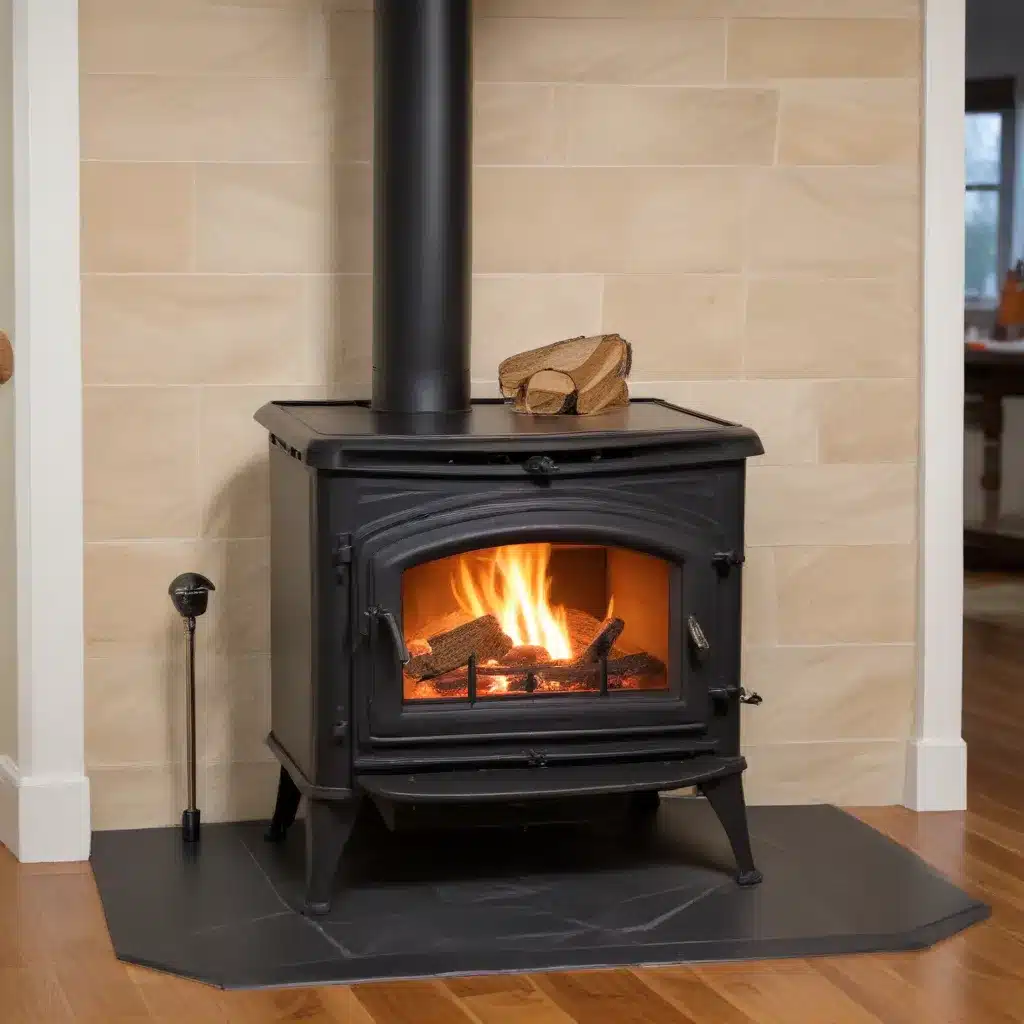
Mastering the Art of Wood Stove Maintenance
As a seasoned expert in the world of wood stoves and heating solutions, I’m excited to share my insights on how to keep your wood stove running smoothly. Whether you’re a longtime wood stove enthusiast or just starting to explore this efficient and sustainable heating option, this comprehensive guide will equip you with the knowledge and troubleshooting tips to ensure your stove operates at its best.
Preparing Your Wood Stove for the Season
Before firing up your wood stove for the first time, it’s crucial to perform a thorough inspection and maintenance routine. Start by clearing out any accumulated ash from the previous season. Proper ash removal not only helps improve airflow and combustion efficiency but also reduces the risk of a potential fire hazard. Be sure to dispose of the ash in a metal container and keep it away from any flammable materials.
Next, take a close look at your stove’s interior and examine the condition of the firebricks, grates, and other components. If any parts are damaged or worn, consider replacing them to maintain optimal performance and safety. It’s also a good idea to have your chimney professionally cleaned to ensure proper airflow and prevent the buildup of creosote, a highly flammable byproduct of wood combustion.
Mastering the Art of Fire Starting
One of the most common challenges wood stove owners face is consistently starting and maintaining a strong, long-lasting fire. By following a few key steps, you can become a pro at fire starting and keep your stove running smoothly throughout the season.
Priming the Flue
Before lighting your first fire, it’s essential to prime the flue to ensure proper airflow and prevent smoke from filling your living space. To do this, roll up a piece of newspaper into a stick shape, light one end, and hold it up towards the open damper. Repeat this process until you feel the air flow reversing, indicating that the warm air is being drawn up the chimney.
Laying the Kindling
Once the flue is primed, it’s time to start building your fire. Begin by placing a layer of ash or sand at the bottom of the firebox to act as insulation and fuel. Next, create a criss-cross arrangement of small, dry kindling pieces, leaving space between them for air to circulate. Light the kindling in several places, ensuring that it fully catches before adding larger logs.
Controlling Airflow
The key to maintaining a steady, efficient fire is controlling the airflow. Keep the air vents or dampers on your wood stove partially open to allow just the right amount of oxygen to feed the fire. If the fire is burning too quickly, gradually close the vents to restrict the airflow. Conversely, if the fire is struggling to stay lit, open the vents to increase the oxygen supply.
Troubleshooting Common Wood Stove Issues
Even with the best maintenance and fire-starting techniques, wood stove owners may occasionally encounter issues that require troubleshooting. Let’s explore some common problems and effective solutions.
Smoke Spillage
If you notice smoke spilling into your living space, the first thing to check is the flue. Ensure that the damper is fully open and that the chimney is not blocked or obstructed. If the problem persists, it could be due to poor draft or the use of wet, unseasoned firewood. Increase the airflow by opening the air vents, and consider upgrading to a higher-quality, well-dried fuel source.
Frequent Ash Buildup
Excessive ash buildup can hinder airflow and reduce the efficiency of your wood stove. If you find yourself emptying the ash pan more often than usual, it could be a sign of inefficient combustion. Check the condition of your wood stove’s air intake system and make any necessary adjustments to improve the air-to-fuel ratio. Regular cleaning and maintenance can also help mitigate this issue.
Inconsistent Heat Output
Fluctuations in heat output can be frustrating, but there are a few steps you can take to achieve more consistent and reliable heating. Ensure that you’re using properly seasoned, high-quality firewood that burns cleanly and evenly. Monitor the air vents and adjust them as needed to maintain the optimal air-to-fuel ratio. Additionally, consider upgrading to a newer, more efficient wood stove model if your current one is outdated or struggling to meet your heating needs.
Embracing Sustainable Heating Solutions
As an expert in the field of wood stoves and heating, I strongly believe in the importance of adopting sustainable and eco-friendly heating practices. Wood stoves, when used responsibly and in conjunction with well-seasoned fuel, can be a clean, renewable, and cost-effective heating solution.
Beyond the wood stove itself, there are numerous ways to enhance the energy efficiency of your home and reduce your overall heating costs. Explore options such as improving insulation, upgrading windows and doors, and incorporating passive solar design elements. By taking a holistic approach to home heating, you can not only keep your wood stove running smoothly but also contribute to a more sustainable future.
Remember, the key to maintaining a well-functioning wood stove lies in diligent maintenance, proper fire-starting techniques, and a willingness to troubleshoot and adapt as needed. With the right knowledge and a commitment to responsible wood stove operation, you can enjoy the cozy warmth and ambiance of a wood-fired heating system for years to come.
For more information on wood stoves, heating solutions, and sustainable living, be sure to visit https://woodstoveheaters.com/. Our team of experts is dedicated to providing you with the resources and guidance you need to make informed decisions and create a comfortable, energy-efficient home environment.


